In home food preservation, two popular methods stand out for ensuring the longevity and safety of your culinary creations: Water Bath Canning and Pressure Canning. These techniques, while sharing the common goal of preserving food, differ significantly in their approach and application. Let’s look into the nuances of Water Bath Canning and Pressure Canning to understand when and why each method is preferred.
Understanding Water Bath Canning
What is Water Bath Canning?
Water Bath Canning is a traditional food preservation method that involves submerging sealed jars of food in a boiling water bath. This method is suitable for high-acid foods like fruits, pickles, and jams, as the acidity helps prevent the growth of harmful bacteria and molds.
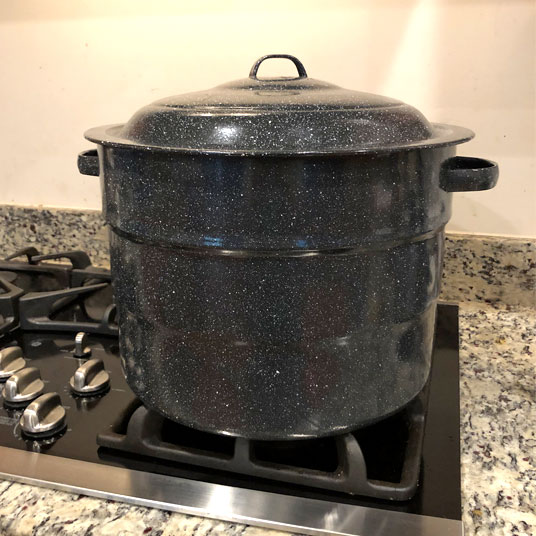
The Process
Here are simplified water bath canning steps. Always follow a safe and tested canning recipe when water bath canning.
- Preparation: Clean and sterilize your jars, lids, and rings.
- Fill the Jars: Pack the jars with your prepared high-acid foods.
- Sealing: Ensure proper sealing by wiping jar rims and using sterilized lids and rings.
- Water Bath: Submerge the sealed jars in a boiling water bath for the specified time.
- Cooling: Allow the jars to cool, and check for a proper seal before storing.
Advantages of Water Bath Canning
- Ideal for high-acid foods.
- Simple and accessible for beginners.
- Minimal equipment required.
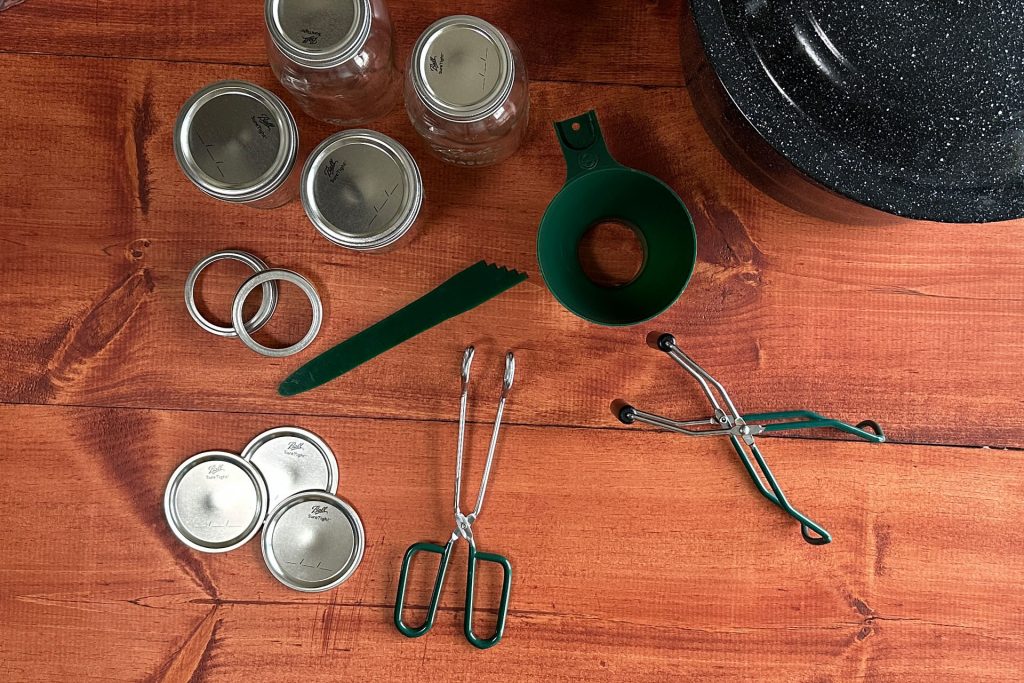
High-Acid Foods Safe for Water Bath Canning
Water Bath Canning is an excellent method for preserving high-acid foods, thanks to its ability to create an environment that inhibits the growth of harmful bacteria and molds. Here are some examples of high-acid foods that can safely be water bath canned:
Fruits:
- Peaches
- Pears
- Apples (for jams, jellies, applesauce)
- Cherries
- Berries (strawberries, raspberries, blueberries)
Fruit Jams and Jellies:
Pickled Vegetables:
- Pickled Peppers
- Pickles (cucumbers) (Dill Pickles, Bread and Butter Pickles)
- Pickled Beets
- Pickled Green Beans
Tomatoes and Tomato-based Products:
- Whole Tomatoes
- Tomato Sauce
- Salsa
- Tomato Jam
- Tomato Paste
Fruit Pie Fillings:
Fruit Chutneys and Salsa:
- Mango Chutney
- Mango Habanero Salsa
- Peach Salsa
- Cranberry Chutney
Fruit Syrups and sauces:
These high-acid foods not only lend themselves well to water bath canning but also retain their vibrant colors, flavors, and textures after the preservation process. Remember to follow proper canning procedures and guidelines to ensure the safety and longevity of your canned goods.
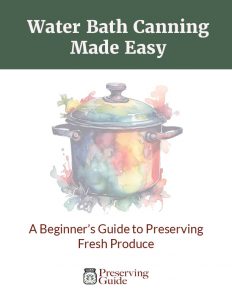
Water Bath Canning Made Easy
Preserve the flavors of your favorite fruits and vegetables with my FREE comprehensive and beginner-friendly Water Bath canning eBook.
Exploring Pressure Canning
Pressure Canning is a more versatile method that extends beyond high-acid foods, allowing the preservation of low-acid foods like vegetables, meats, and poultry. It relies on high temperatures and pressure to eliminate harmful microorganisms.
The Pressure Canning Process
Here are simplified pressure canning steps. Always follow a safe and tested canning recipe when pressure canning.
- Jar Preparation: Clean and sterilize jars, lids, and rings.
- Food Packing: Fill jars with low-acid foods, leaving the recommended headspace.
- Sealing: Seal jars with sterilized lids and rings.
- Pressure Canning: Place the jars in the pressure canner, ensuring the correct pressure is reached and maintained for the specified time.
- Cooling: Allow jars to cool, checking for proper seals.
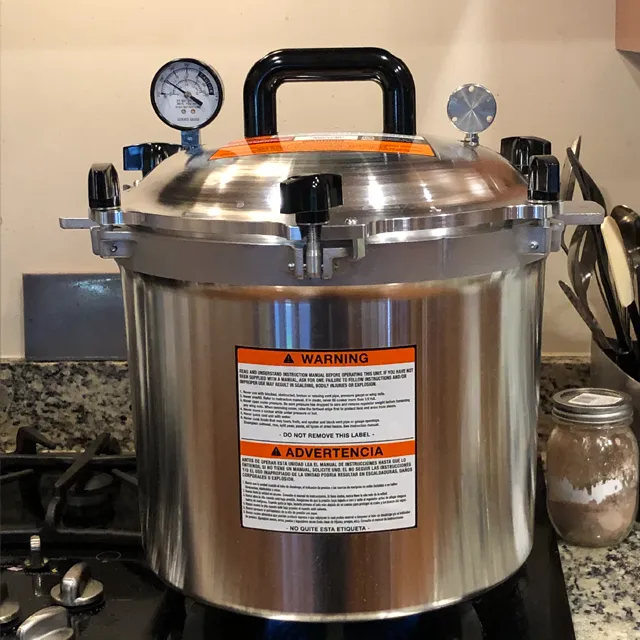
Advantages of Pressure Canning
- Suitable for low-acid foods.
- Preserve a wide range of foods.
- Retains flavors and nutrients better than Water Bath Canning.
Low-Acid Foods that Require Pressure Canning
Pressure Canning is the go-to method for preserving low-acid foods due to its ability to reach higher temperatures, ensuring the elimination of harmful microorganisms. Here are some examples of low-acid foods that can safely be pressure canned:
Vegetables:
- Green Beans
- Carrots
- Peas
- Corn
- Beets
- Potatoes (diced or whole)
Meats:
- Chicken
- Beef
- Pork
- Turkey
- Fish
Soups and Stews:
- Vegetable Soup
- Beef Stew
- Chicken Soup
- Split Pea
Chili and Bean Dishes:
- Classic Chili
- Baked Beans
- Pinto Beans
- Dry Beans
Pasta Sauces with Meat:
- Meat Sauce
- Bolognese Sauce
Broths and Stock:
- Beef Broth
- Vegetable Stock
Mixed Vegetable Combinations:
- Mixed Vegetable Medley
Prepared Meals:
- Chicken Chili Verde
- Pot Roast in a Jar
- Beef Stroganoff
Pressure canning is crucial for low-acid foods to ensure they are safely preserved and ready for consumption without the risk of spoilage. Always follow recommended processing times, pressures, and guidelines to maintain the quality and safety of your pressure-canned goods.

Join My Preserving Guide Facebook Group
Expert tips, tested recipes, and vibrant discussions on canning, dehydrating, freezing, and all things food preservation!
Water Bath Canning Vs. Pressure Canning: The Key Differences
1. Applicability
- Water Bath Canning: Best for high-acid foods.
- Pressure Canning: Suitable for both high-acid and low-acid foods.
2. Processing Time
- Water Bath Canning: Typically shorter processing times.
- Pressure Canning: Longer processing times due to the need for higher temperatures.
3. Equipment
- Water Bath Canning: Basic equipment like a large pot with lid and jars.
- Pressure Canning: Requires a pressure canner, which may be costlier.
4. Versatility
- Water Bath Canning: Limited to certain types of foods.
- Pressure Canning: Offers versatility for a broader range of foods.
Choosing the Right Method for Your Needs
When deciding between Water Bath Canning and Pressure Canning, consider the type of food you intend to preserve. High-acid foods are well-suited for Water Bath Canning, while low-acid foods necessitate the reliability of Pressure Canning.
Whether you opt for Water Bath Canning or Pressure Canning depends on the nature of the food you’re preserving and your specific requirements. Both methods have their merits, and understanding their differences allows you to make informed decisions in your journey of home food preservation. Experiment with both techniques to find the perfect fit for your culinary creations, ensuring they stay fresh, flavorful, and safe for consumption over time.
Do you can using a glass-topped stove? Here are some tips and tricks for canning on a glass-topped stove.
Happy canning!
Editorial Process
At Preserving Guide, I take pride in my thorough and impartial approach to recipe and product reviews. Read my editorial process for detailsRobin
Robin Phelps has been preserving food for her family for over 20 years. Today, Robin is a full-time home preservation blogger and coach. Join Robin to learn how to easily make delicious and safe homemade preserved items.
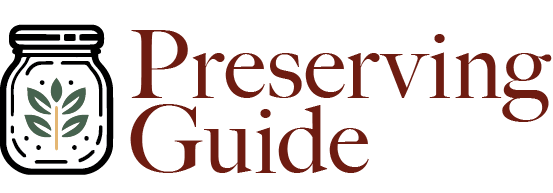

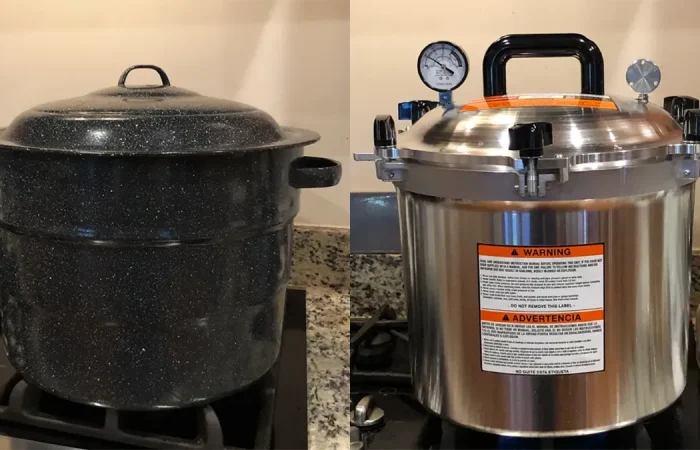
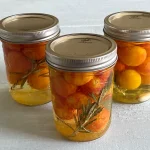
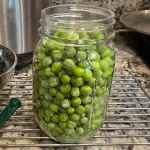
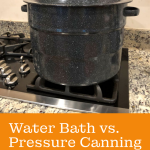
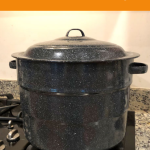
No Comment! Be the first one.